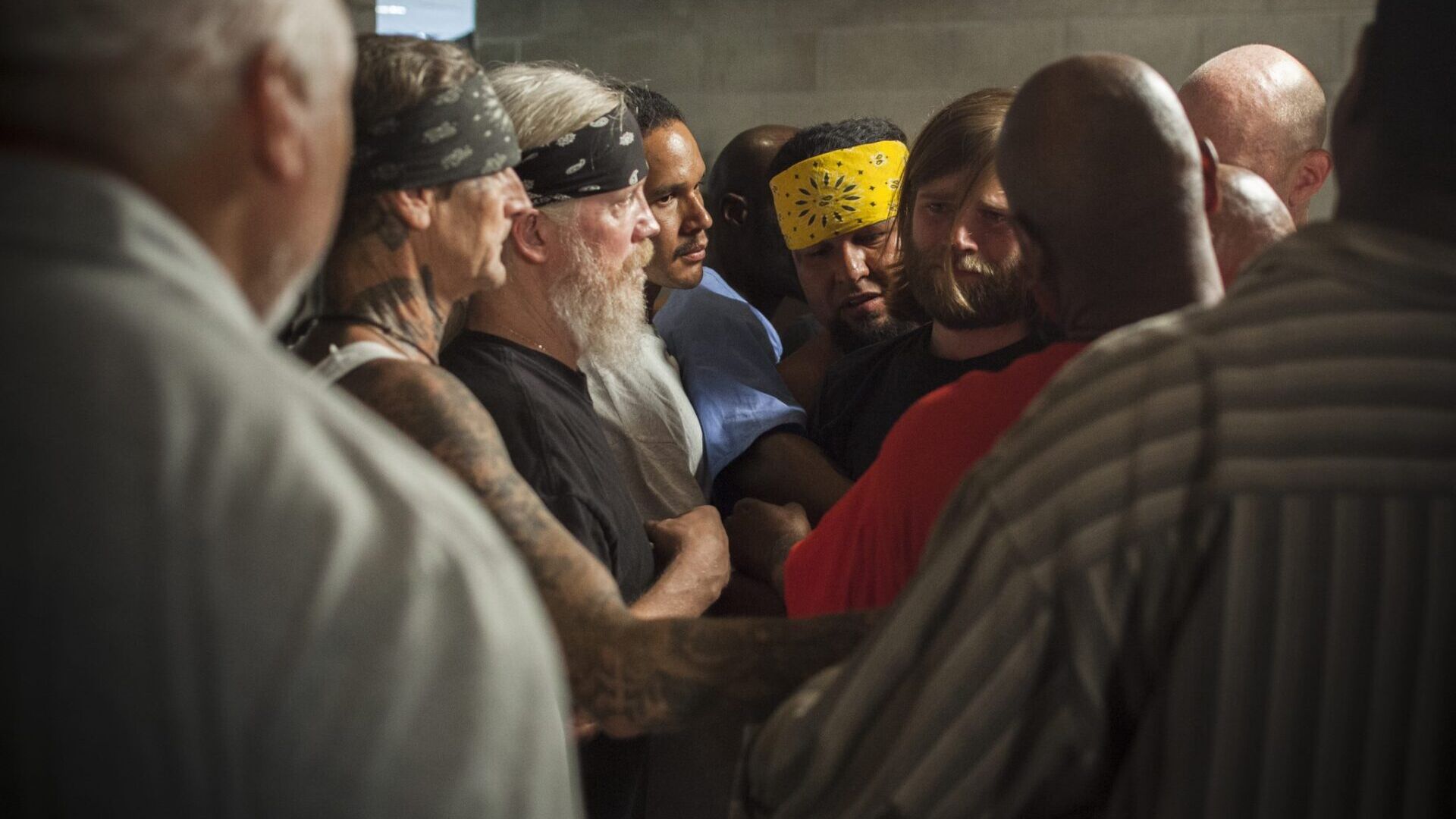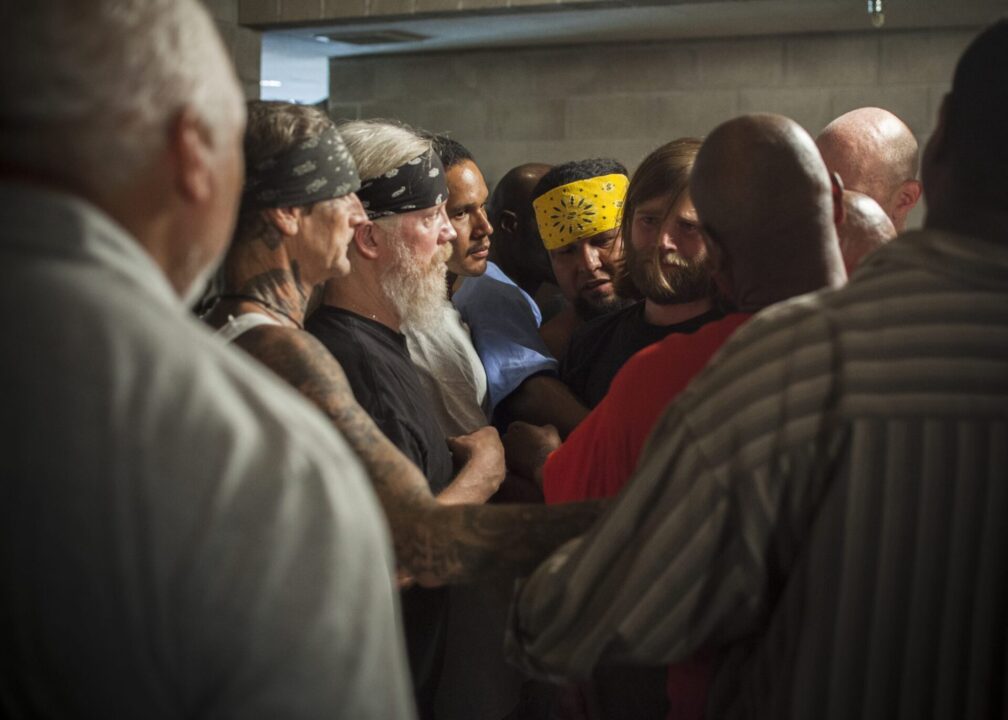Non-fiction filmmaking comes in all shapes and sizes.
Some films attempt to cover global-scale issues spanning the continents. Others take place within the confines of a single room. Jarius McLeary’s new documentary The Work falls into the latter category. The entire runtime takes place in the span of four days, all within the walls of a chapel at a maximum security prison.
Folsom Prison, near Sacramento, CA, is widely known by name for the iconic Johnny Cash tune, yet unlike many mythologized prisons, is still fully operating today and full of life-sentenced killers and felons. A unique group therapy practice, known simply as “The Work,” is employed annually at the prison, and this film is an intimate archiving of one year’s practice. Interestingly, the group is not solely inmates, but a handful of individuals from the outside with no criminal backgrounds who are also brought in to participate. It isn’t made clear exactly why they are brought in, but it gives us even more unique characters to discover. They too, like the inmates, are about to enter a transformative therapeutic experience. Throughout the four days, we watch as numerous characters apply a unique form of group therapy with hopes of extracting emotion from men who may not have known they were capable of having it.
‘The Work’ leaves the larger conversations on prison reform and macro topics for another film and instead allows us to know characters at their most vulnerable state.
Early on, the film teases that this program is an opportunity for the inmates to set aside their racial gang affiliations and all work together. And surprisingly, there is little tension between men of different ethnicities. This text intro asks a question that the film doesn’t fully answer: When the men leave this therapy, how do they interact with each other afterward? It’s clearly a very effective practice, tailored specifically to convicts, but the film could have benefitted from (if even permissible) following through on this question by showing or telling us what life was like outside the chapel walls and inside the prison yard. Or perhaps omitted this statement altogether.
The style of the film reveals itself as camera operators are occasionally seen capturing the different angles of the action. It’s a bit distracting to see the cameramen (including, unfortunately, in the final shot of the film) but when the film does have its moments, they land. The group therapy ‘work’ is almost unthinkable to those of us without criminal backgrounds. It’s a tense, focused, often physical, mind bend to get individuals to a point where they can properly express their emotion. These are hardened men who have likely never been able to express their emotions in a healthy manner. It may look disturbing to us and that is the point of the film. What matters is that it works. By the end of these four days, we’re told the statistics are undeniable about how the program has made a difference.
In the end, this is a human portrait that helps bring to light some of the dark realities that face those behind bars. The Work leaves the larger conversations on prison reform and macro topics for another film and instead allows us to know characters at their most vulnerable state. And so, perhaps the film will move those who see it to recognize the many men in our country who are locked up as not merely a statistic of violence, but individuals who, with proper education and emotional healing, could reach reform. A program like “The Work” is a step toward more noble treatment and therefore a healthier society for free people and convicts alike.
‘The Work’ is not rated. 89 minutes. Now playing in select theaters, on demand 11/21.
H. Nelson Tracey
Nelson is a film director and editor from Denver based in Los Angeles. In addition to writing for Cinemacy, he has worked on multiple high profile documentaries and curates the YouTube channel "Hint of Film." You can check out more of his work at his website, hnelsontracey.com


